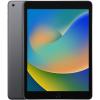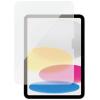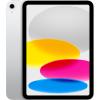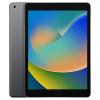Learners, educators, and institutions worldwide use iPads to inspire creativity, making learning more powerful.
iPads have been recognised as a valuable learning aid to increase digital literacy. Educators worldwide have integrated them into their toolset to teach learners how to process, access and create information.
Since Apple launched the iPad in 2010, millions of devices have made their way into education across various ages and learning levels. iPads are made to be compatible with the classroom and education environment, especially with services such as Apple Mobile Device Management (MDM) and its Device Enrolment Program (DEP).
Integration of parental controls and Screen Time has given many parents and teachers a way to monitor device usage for peace of mind when leaving minors unsupervised with iPad.
iPads are great educational devices, but it can be challenging to identify which model best suits students' needs with varying feature sets and price points. Here are our recommendations for top iPads across different education levels.
Supporting Primary School Students
Many teachers across the globe have used the iPad to design interactive, engaging experiences for primary school learners, enhancing all aspects of their learning. Educators discovered that the iPad enabled students to learn at their own pace, communicate, and encourage creativity.
Te Akau ki Papamoa Primary School, an Apple Distinguished School, has used iPads to seamlessly extend the classroom experience and build connections with the New Zealand landscape and heritage. When the school introduced their one-to-one iPad pilot program, educators saw that 70% of students were below the expected standard. By the program’s sixth year, the school reported that 90% of the students’ reading results were above the expected national average.
The iPad is ideal for primary school students due to its small and compact design. For young learners, using an iPad for school will be their first experience with having a personal device, so it’ll need to be sturdy and withstand rough handling. At the same time, the iPad's intuitive interface allows young minds to undertake tasks independently.
Primary school education devices need to be affordable and packed with enough power to run education apps smoothly without having top-range processing power and graphics that will go to waste.
The all-new iPad (10th Gen) is colourfully re-imagined to be more capable and intuitive. With a new all-screen design, this 10.9-inch Liquid Retina display is available in four gorgeous colours, with up to 256 GB storage options. The latest generation comes with an A14 Bionic chip, delivering more power and performance, helping students to get things done and stay connected to the classroom.
For a more affordable option, the iPad 9th Generation (10.2-inch) remains a suitable device for primary students. It's equipped with an A13 Bionic chip, delivering capable CPU and graphic performance, powerful enough to provide an all-day battery life. It can handle multiple tasks simultaneously and is a great entry-level device for primary school students.
Both generations are among the most affordable iPad models in the market, making its price point suitable for schools to buy in bulk for large BYOD deployments.
Like the rest of the Apple product range, both models are compatible with various accessories, increasing the number of ways learners can use applications on the iPad. The 9th Generation works with the Apple Smart Keyboard, while the 10th Gen works with the Magic Keyboard Folio. Both models are compatible with the first-generation Apple Pencil, an excellent tool for drawing and taking notes.
The iPad offers plenty of built-in features useful for primary education. With Speak Selection, students can highlight text or use the Speak option to have the text read out loud to them. They can use Speak Screen to read the entire content on the screen, which increases language exposure to younger learners.
With Dictation, students can talk to their iPad, which will write that information for them. Learners are no longer limited to only writing or typing, encouraging them to practice their speaking skills.
Discover iPads for Primary school students
Supporting Secondary school students
Like Te Akau ki Papamoa Primary School, East Hills Technology High School in Sydney, Australia, also implemented an iPad program for students in years 7, 8, 9, and 10 in 2014. East Hills consistently gave students innovative and inspiring learning strategies to support their learning by giving them access to technology and interactive textbooks when learning in the classroom and at home.
After two years, East Hills reported student academic improvement on the National Assessment Program Literacy and Numeracy exams for reading, numeracy, spelling, and grammar. In year 9 students, there was a 32% increase in reading scores, a 22% increase in numeracy scores, a 13% increase in spelling, and a 9% increase in grammar scores.
Secondary students start getting into a more complex and layered analysis of what they’re learning. They're starting to use processor-heavy applications, calling for a better chip, especially when experimenting with different media formats and taking more photos and videos.
The iPad Air (5th generation) is the next step up from the 10.2-inch iPad, fitting for students who are starting to use it as an extension of how they explore the world around them. It's supercharged by the Apple M1 chip, which has better graphics and is 60% faster than the previous generation, giving secondary students the ability to do more and launch heavier apps.
The storage options on the iPad Air go up to 256GB for media storage and editing, complemented by a display with a higher resolution compared to the 10.2-inch iPad. It’s also compatible with the second-generation Apple Pencil, Magic Keyboard and Smart Keyboard Folio.
Educators are looking into different ways to inspire students and enable collaboration. The de Ferrers Academy, another Apple Distinguished school in Burton upon Trent, United Kingdom, also launched a one-to-one iPad program. The school sought ways to improve student engagement and progress during exam preparation. In the third year of the 1:1 iPad implementation program, de Ferrers reported a 53% increase in students achieving A-level physics grades. The teachers noticed greater student engagement, higher grades, and increased exam passing rates.
The iPad provides game-changing opportunities to secondary students. The Apple ecosystem works seamlessly, allowing students to focus on their assignments and learning.
For instance, the iPad Air has a 12MP Ultra Wide front camera with Centre Stage. This is an excellent addition for remote classes, making video calls feel more natural where the camera automatically pans, keeping the user in the shot. Additionally, students can enjoy fast network connectivity with 5G and Wi-Fi 6, ensuring they stay connected wherever they're located.
Supporting Tertiary school students
The demand for online learning is growing. According to a report, 77% of students decide on a course based on online availability.
Mobile or portable devices like phones and tablets are becoming more prominent in higher education. According to a survey, 21% of students prefer to complete all course-related assignments on a mobile device, while 51% would like to use a mobile device for most tasks.
Tertiary students are at the stage where they can purchase devices based on their own needs and approach them as a personal investment. The device should withstand an entire year of university courses. Ideally, students are looking for a device that can last all day long to carry around to lectures and tutorials and is reliable for completing assignments.
The iPad Pro 11-inch (3rd generation) brings out all the big guns with a larger Liquid Retina XDR display that makes university readings crisp and clear, making it easy to annotate with the Apple Pencil. The 11-inch model is the ideal screen size versus the smaller 9.7-inch model and bigger 12.9-inch model.
The M1 chip with a next-generation Neural engine delivers mind-blowing speed, excellent graphics and an all-day battery. Students can get models with up to 2TB of storage to store all the reference materials needed for an entire course. With 5G connectivity, the iPad Pro has super-fast downloads and high-quality streaming of online university courses. It’s also compatible with the second-generation Apple Pencil, Magic Keyboard and Smart Keyboard Folio.
Alternatively, Apple released the 4th Generation of the iPad Pro 11, featuring an M2 chip for better processing power and advanced graphic displays. Compared to the previous generation, the 4th Gen has a USB-C output with Thunderbolt/USB4 support.






